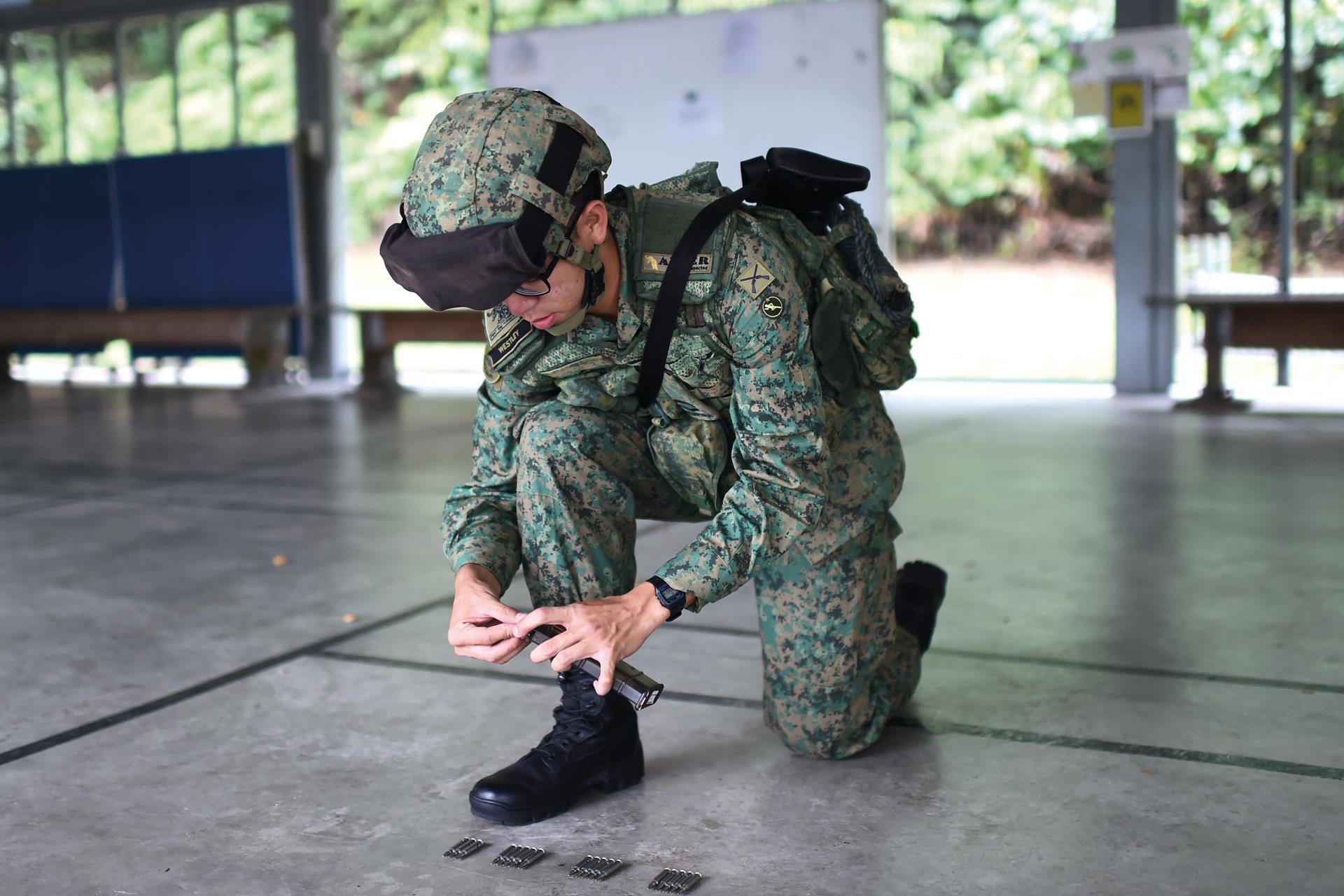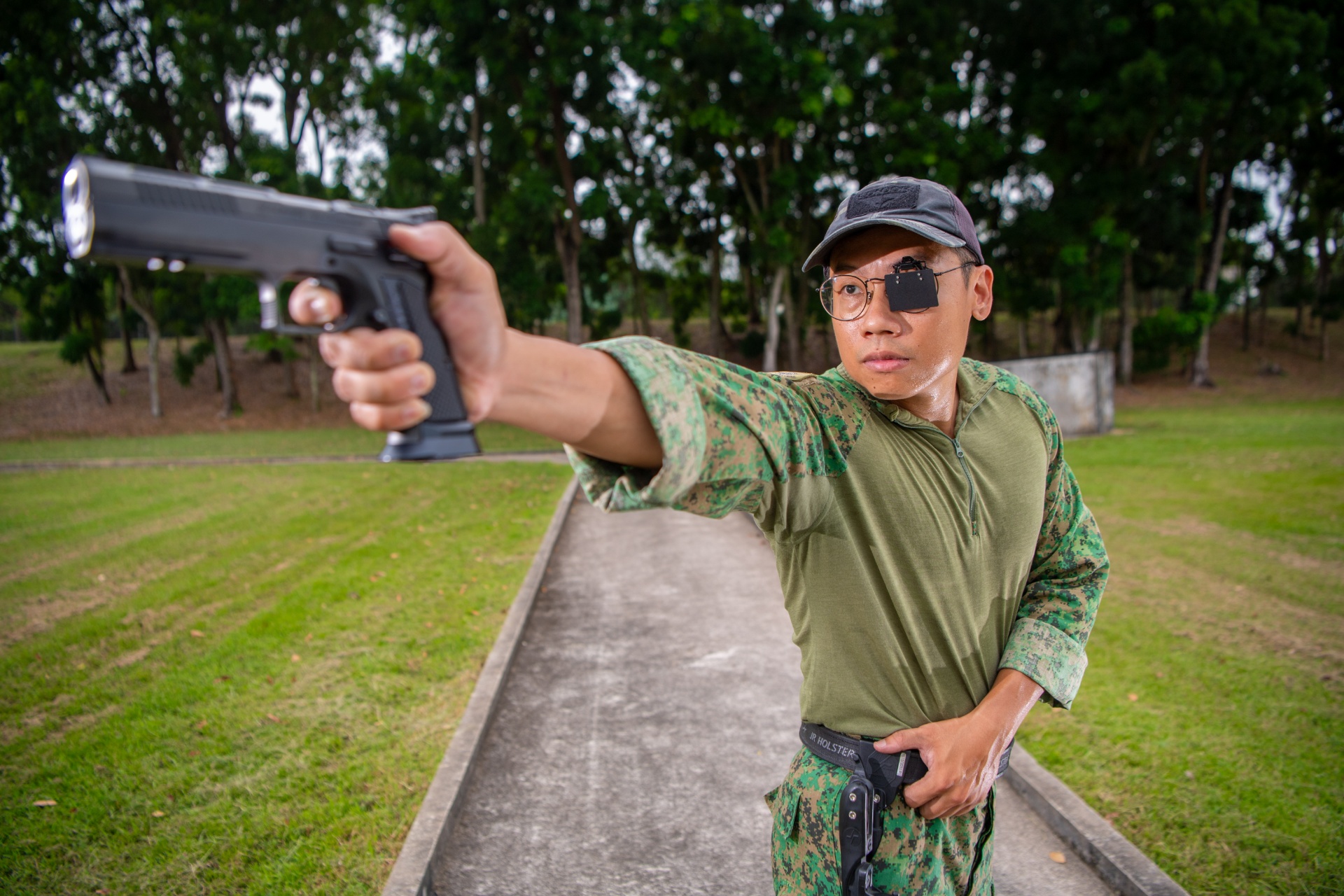TECHNOLOGY
Sparking innovations
01 Nov 2018
Take a closer look at some of this year’s award-winning PRIDE (PRoductivity and Innovation in Daily Efforts) projects — and the people behind them.

Creativity and innovation are not often associated with large organisations like the Singapore Armed Forces (SAF). But its servicemen and women — from the rank and file to the top brass — have been supporting and creating innovations that harness the latest technologies like data analytics, artificial intelligence, 3D-printing and more.
The secret lies in its work culture which encourages bold thinking and actions. Here are some of this year’s winning projects:
Made to measure
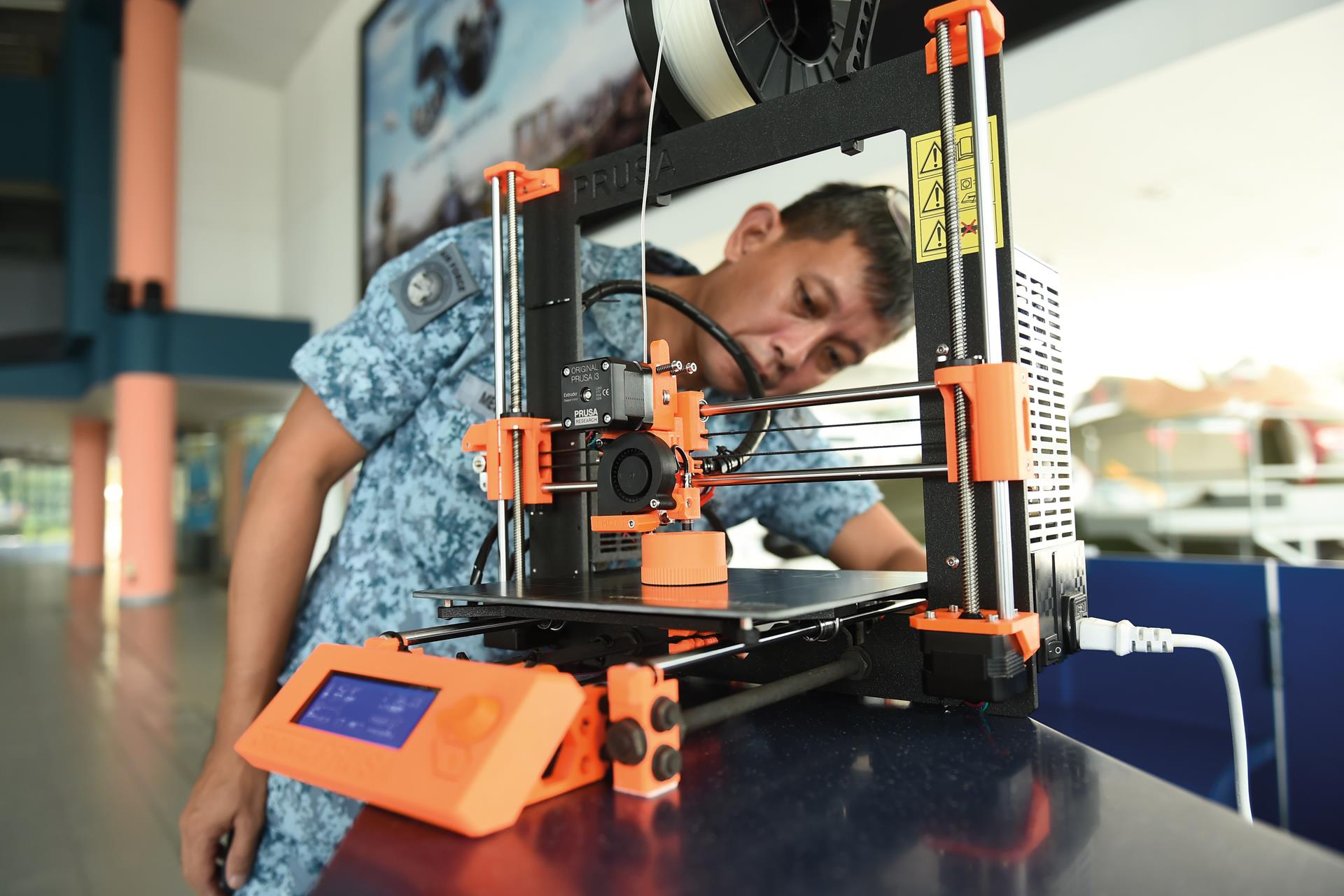
Preparing a fighter aircraft like the F-15SG for a mission is a high-tempo operation. The engineers have to load the missiles onto the aircraft in the shortest time possible.
It is a complex task involving multiple components; some have to be handled delicately. One such item is the missile buffer — a 30-pin connector that connects a missile to the aircraft.
It is kept in a thin plastic casing which offers little protection; a drop may dent the pins, causing a loss in connection between the missile and the electronic system on board the aircraft. Simply put, the pilot will not be able to fire the missile.
“If this happens, you’ll have to cancel your mission,” said Military Expert (ME) 2 Aaron Chew, an Air Force Engineer from 142 Squadron (SQN).
“There is no way the ground crew can spot these bent or damaged pins until they start up the aircraft. And even then, we may not be able to immediately identify the root of the problem.”
In the last two years, the 34-year-old has seen a handful of instances of potential damage to the missile buffer.
But not anymore.
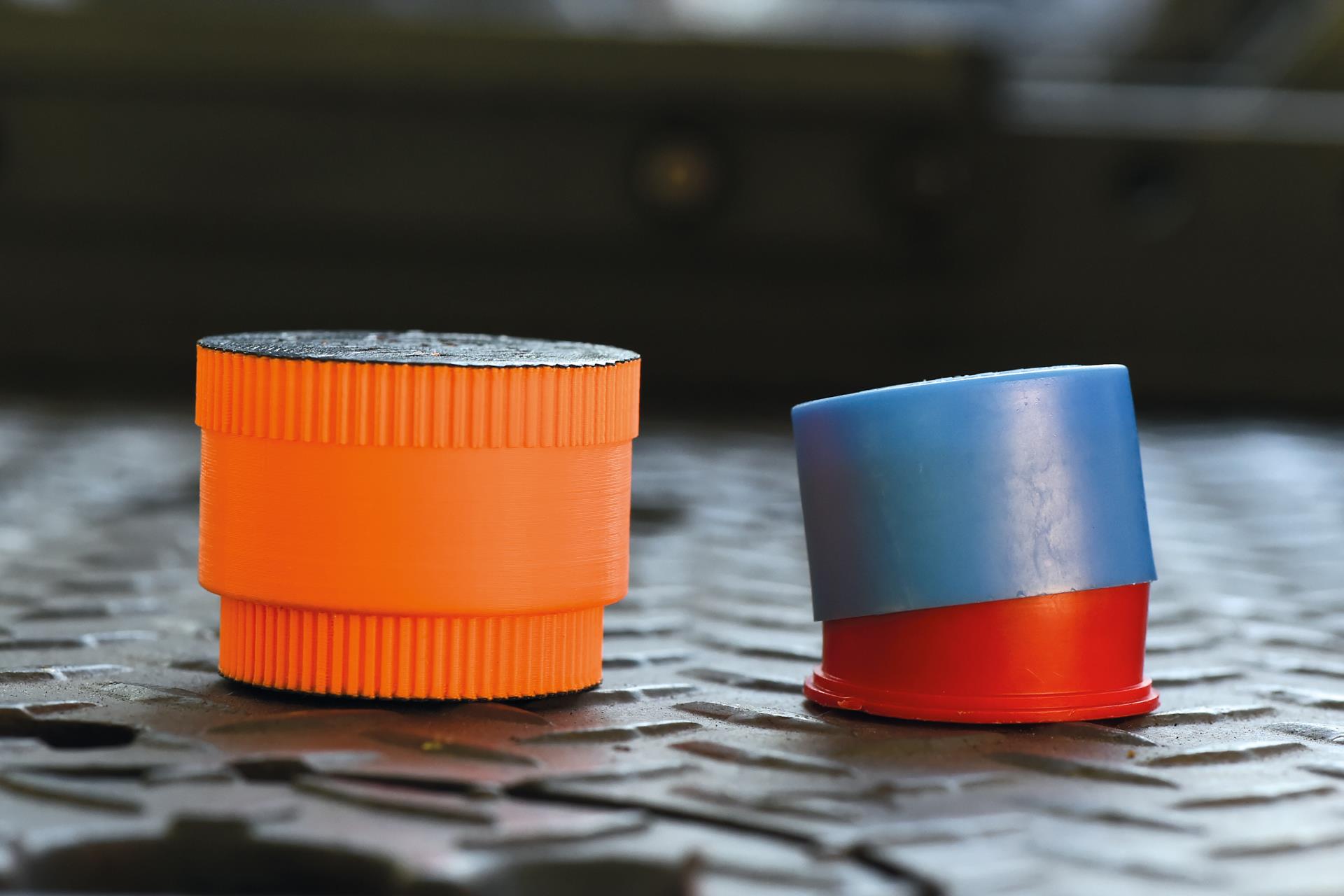

On the case
Today, the engineers in his squadron use a durable plastic case that is customised to fit and protect the missile buffer. Created using 3D-printing technology, the case can be screwed tight and has a threaded surface that helps to prevent slippage.
This new case is the brainchild of ME2 Chew and fellow Air Force engineer ME3 Chua Chin Heng.
The duo hatched the idea in 2015 while working at the Peace Carvin V detachment in the United States.
Over the next one and a half years, they came up with 10 different designs for testing. ME3 Chua, a 3D-printing enthusiast, produced the prototypes. “We just want to help make our work easier for the team,” said the 44-year-old.
By avoiding the time wasted from troubleshooting, the cost of replacing the missile buffers, and the cancellation of missions, the new missile buffer case helps the Republic of Singapore Air Force (RSAF) save $34,000 annually.
This ground-up initiative has even benefitted their counterparts from the United States Air Force, who have adopted their missile buffer case idea.

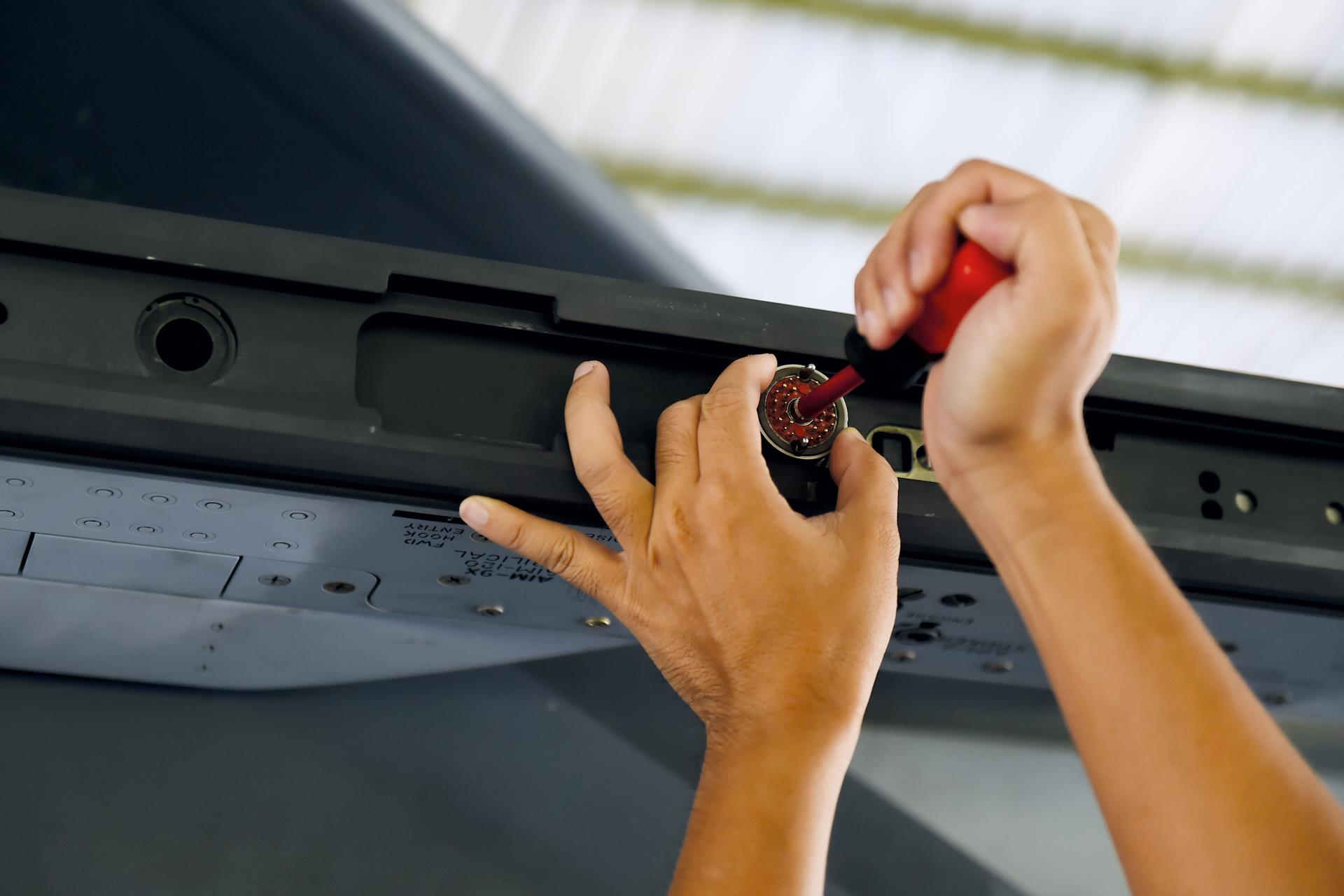
Making their case
A challenge that the duo initially faced was convincing fellow engineers of the feasibility of the idea. Back then, 3D-printing had just taken off and was mainly for hobbyists.
But the duo were confident that their idea would benefit the RSAF, so they produced prototypes for them to try out. Convinced of the idea’s usefulness, their superiors supported the pair in bringing their product for official tests and implementation.
“Whenever we have ideas, if they are practical and useful, our management will facilitate and give us guidance,” said ME2 Chew.
“It was just an idea to improve our lives — getting recognition was never the intent. But we’re definitely excited to hear from senior officers that our idea can be used for other aircraft like the F-16 or any other missiles used in the RSAF,” he added.
Adapt for the better
An F-16 fighter aircraft has just landed, and the ground crew scrambles to prepare it for its next mission. This sometimes includes equipping the jet with additional fuel tanks and a targeting pod (a 200kg device that locates targets and guides the precision missiles or bombs).
Using a trolley-like device called a loader, they move the 370-gallon (about 1,400 litres) fuel tank to the aircraft for installation. Next up is the targeting pod.
A complex operation which involves the removal of bolts and pins, it takes three crew members over 20 minutes to change the fuel tank adaptor on the loader to a smaller one that fits the diameter of the targeting pod. The adaptor secures the targeting pod onto the loader.
But this will soon be a thing of the past: a team of Air Force engineers has created a new adaptor — which takes only five seconds to install!
A ground crew member just needs to slot the new targeting pod adaptor on top of the fuel tank adaptor, just like installing a multi-plug onto a wall socket.
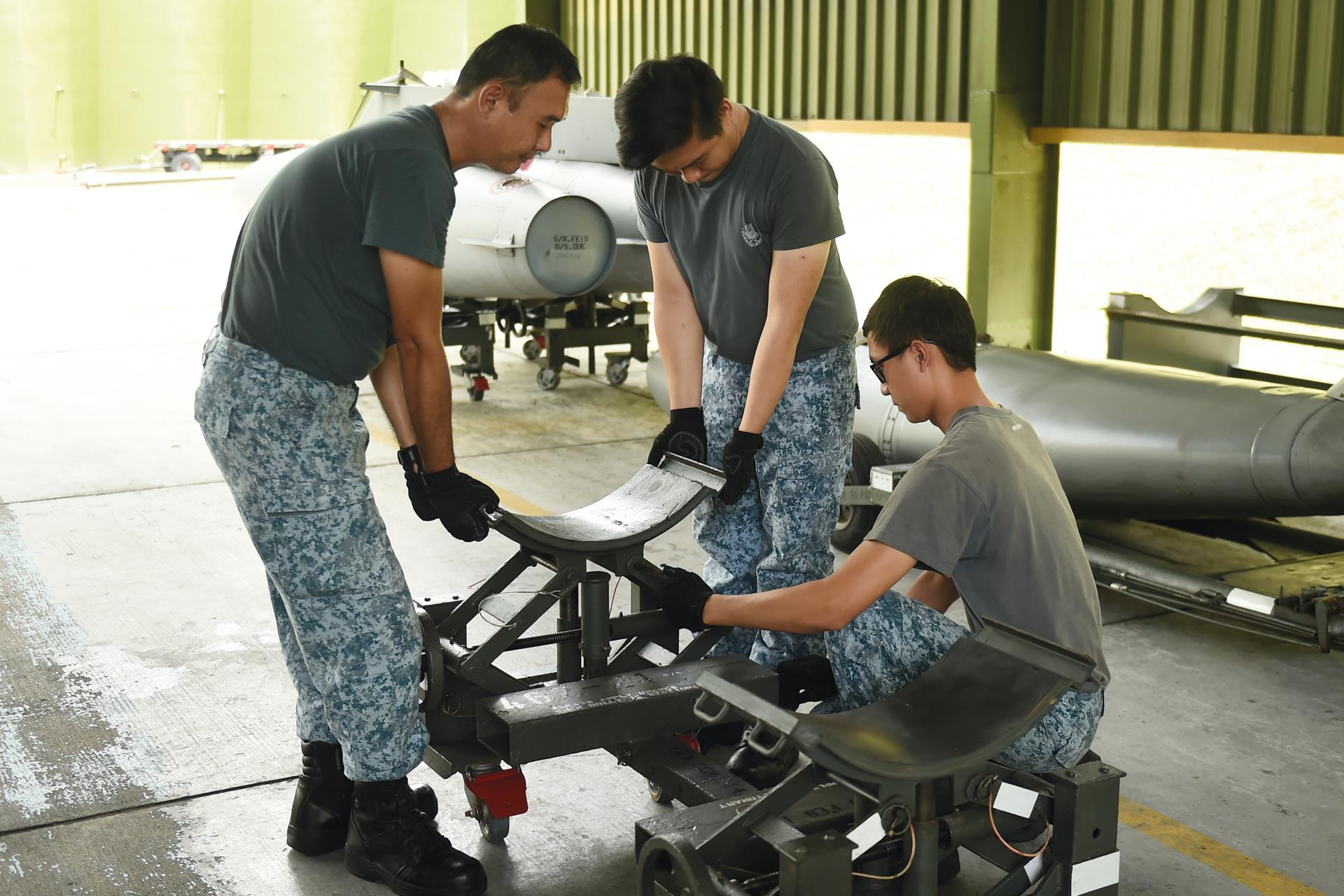
Safer, faster equipping
ME3 Thia Daoli, 36, and ME1 Lai Yongshun, 30, from 143 SQN are part of the five-member team which created the new adaptor.
“In the past, there was a slim chance of getting a minor injury if we didn’t coordinate properly when changing the adaptors. With the new adaptor, we eliminated the process of removing the safety pins and carrying heavy stuff,” said ME3 Thia.
ME1 Lai added: “Over the long run, it helps to reduce the risk of injury; the new adaptor is lighter — you can simply slot it in in five seconds instead of holding it for 10 to 20 minutes.”
Currently used by 143 SQN, the new adaptor will also be used by other squadrons that operate the F-16 aircraft. The boost in productivity and increase of effective missions are projected to help the RSAF save $119,000 annually.
The team started the project in 2017. They were given two hours twice a week to work on the new adaptor. Their squadron also provided them with seed funding of $2,200 to create a prototype.


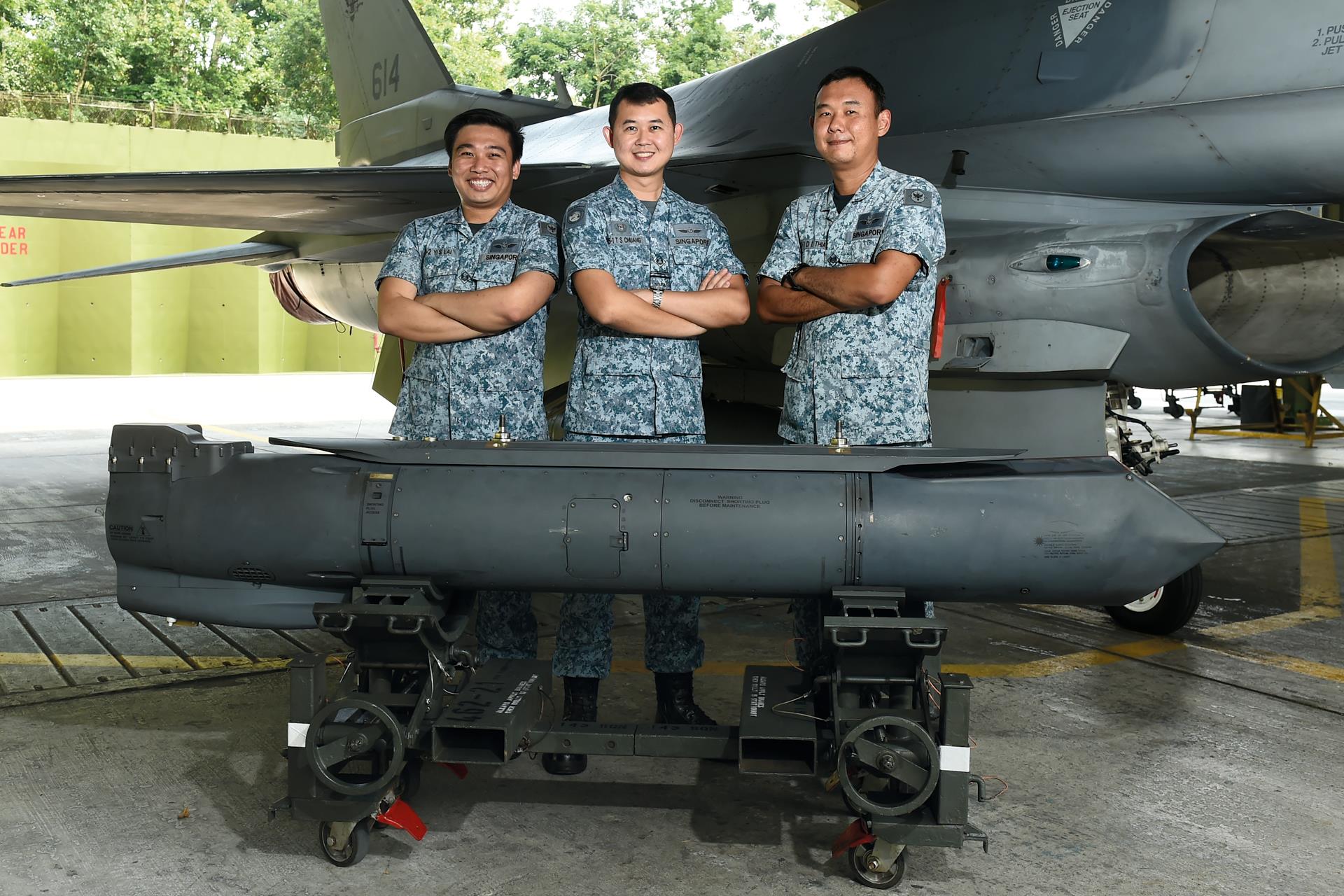
Innovation culture
For their strong support of innovators such as the teams behind the 3D printing of the missile buffer case and the target pod adaptor, the RSAF’s Air Combat Command (ACC) was awarded the Minister for Defence Award (Innovation) (Combat) this year.
“It’s important to provide the necessary support for our servicemen to experiment,” said ME5 Chuang Tze Shiung, 35, officer-in-charge of the innovations and productivity movement in ACC for the last two years.
For example, ACC organises visits to companies like 3M, a global manufacturing company, for servicemen and women to learn the best practices from the private sector.
“We appreciate that our people are willing to take risks. If they do not have the risk appetite to innovate and push boundaries, these innovations wouldn’t have existed. We would be sticking to existing processes and remaining stagnant,” added ME5 Chuang, Officer Commanding of Logistics Flight in 143 SQN.
Auditing without auditors
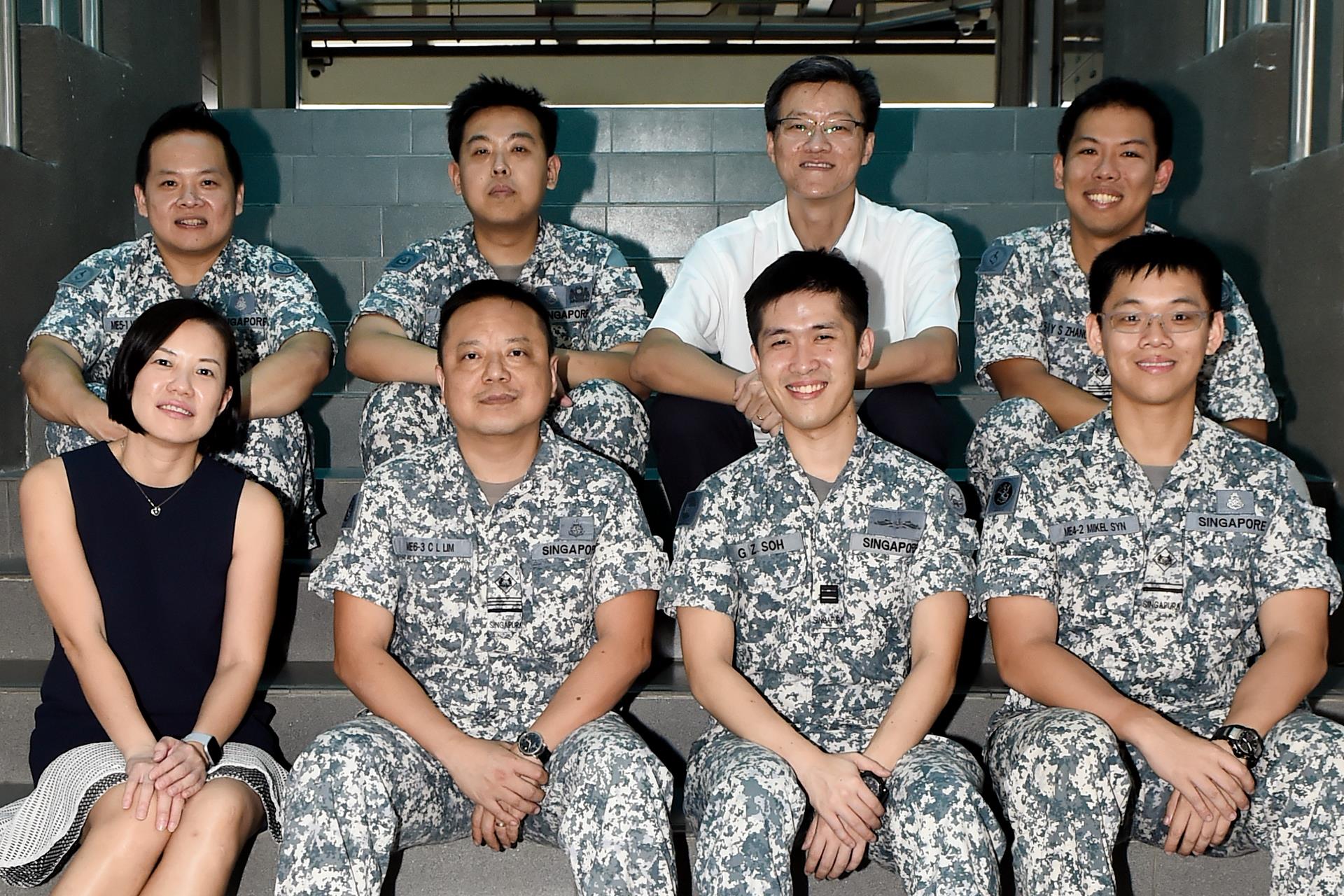
It was almost midnight. ME5 Vincent Ong, a Section Head in Platform Readiness Engineering Centre (PREC), was still in his office with his team, peering through stacks of reports.
Scrutinising each transaction, line by line — more than 2,000 — they were looking out for improper transactions and possible fraud. These laborious manual checks lasted typically for three weeks.
But from this year, Navy personnel like ME5 Ong will have an easier time. The entire process can now be done with the click of a button — thanks to a new checking tool, called the Finance Logistics Assessment Gauge (FLAG), that can detect transaction lapses automatically.
A team from the Republic of Singapore Navy (RSN) developed the tool, in collaboration with staff from the Ministry of Defence’s Internal Audit Branch as well as the Defence, Science and Technology Agency (DSTA).
The impact of their innovation is massive: about $1.5 million in manpower cost savings.
The RSN currently has over 200 contracts for warship maintenance with various defence contractors; on average, about 200 transactions are made under each contract annually.
The team is now looking to work with the Public Service Division to introduce FLAG to other ministries. An audit check is a process that public officers have to go through each year, to ensure that taxpayers’ monies are accounted for and spent according to regulations.
Looking ahead, the team is enhancing the tool to detect and warn of potential transaction lapses in real-time.
“It’s almost like a traffic management system to alert the user. It detects irregularities upfront before you can complete the transaction,” explained team leader ME6 Lim Chee Leong.
“We wanted to make audits checks simpler and (this project) has exceeded all our expectations,” added the Head of Logistics Branch in Maritime Security Task Force.
Recognising innovation & creativity in the SAF
A cool $158 million – this was the amount that innovation helped the Ministry of Defence (MINDEF) and the Singapore Armed Forces (SAF) save last year. For their outstanding projects, 67 award winners were recognised at the PRoductivity and Innovation in Daily Efforts (PRIDE) Symposium held at Nanyang Polytechnic on 4 Oct.
In his speech, Minister for Defence Dr Ng Eng Hen highlighted the importance of innovation to the military, especially digitisation and datafication. “For the SAF to stay ahead, we must learn to use and exploit data more intelligently for our own purposes.”
PITCH

A mobile app called PITCH (Platform for Innovation, Transformation and Change) was launched in October to provide an avenue for servicemen and women to share ideas for innovation.
PayNow for IPPT

The SAF will use PayNow to pay out Individual Physical Proficiency Test (IPPT) incentive awards in a pilot starting in early 2019 at the Maju Fitness Conditioning Centre. Instead of waiting around 14 days to receive their incentive awards through GIRO, they will receive the payout immediately upon the completion of their IPPT via PayNow.
“Building” your own modem
To transmit voice and data to one another, navy ships and command centres on land rely on the MDM3001 modem.
Six years ago, however, the manufacturer informed the RSN that it was stopping production of these modems. This meant that if an existing modem was beyond economical repair, there would be no replacement.
The manufacturer offered a new model as an alternative. The problem? It was not compatible with the RSN’s exisitng communications suite. Replacing all existing modems and communication systems would have cost over $6 million.
That would not have been a cost-effective solution as the current communication suites and modems were still working well.
Mr Wong Kok Leong, then Head of Command, Control, Communications and Computers, Intelligence and Network System Branch (C4INSBr) in the Naval Logistics Department (NLD), threw a challenge to his team of naval engineers: If we can tinker with our own electronics to suit our needs, why can’t we do something similar to solve this problem?
Led by ME4 Michael Ong, Senior Engineer in C4INSBr, and ME5 Terrence Siah, Head, Contract Management Section, the team took up the challenge.
They scoured the commercial market for alternative modems, and worked with manufacturers to modify the firmware so that these devices could “talk” to the RSN’s communication suite.
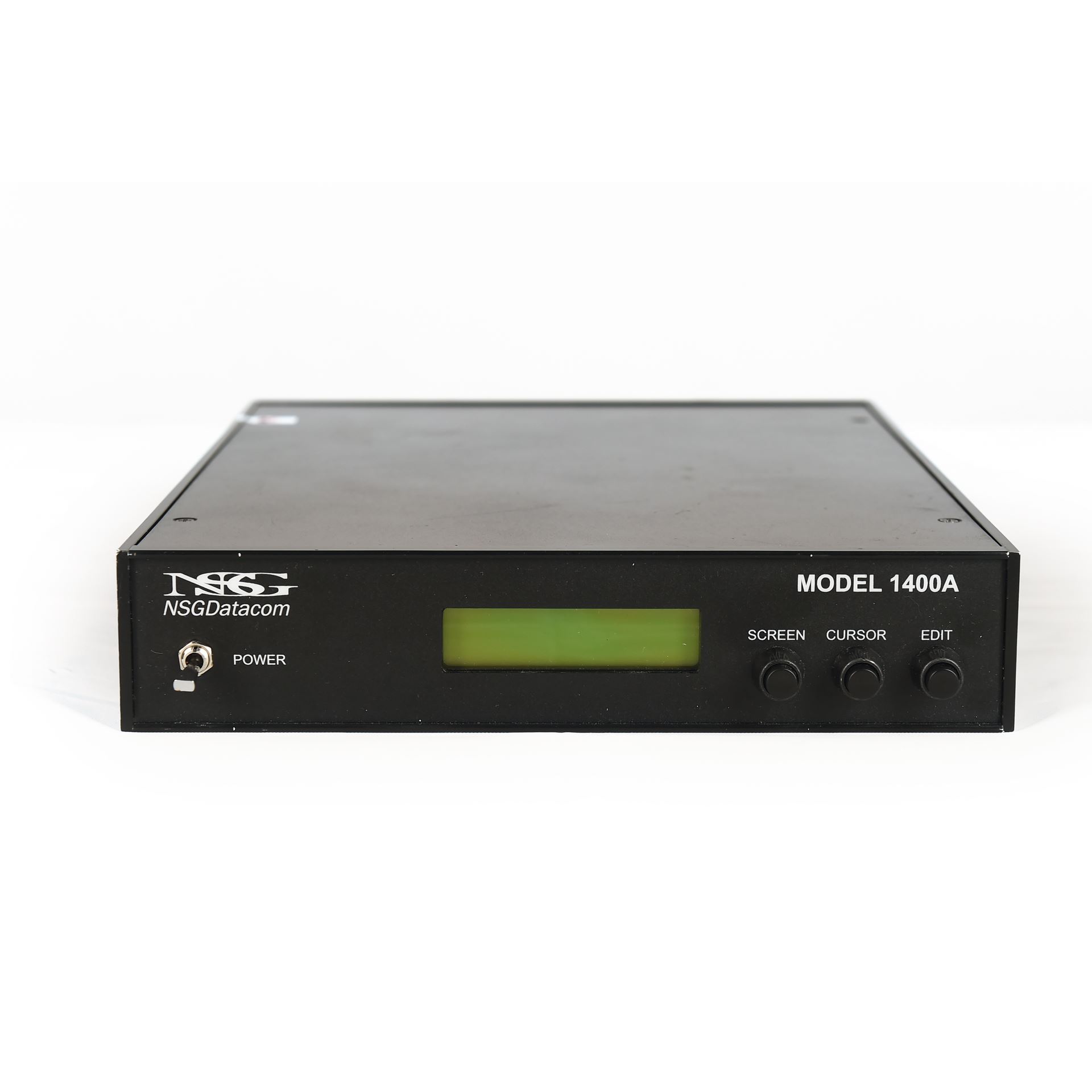
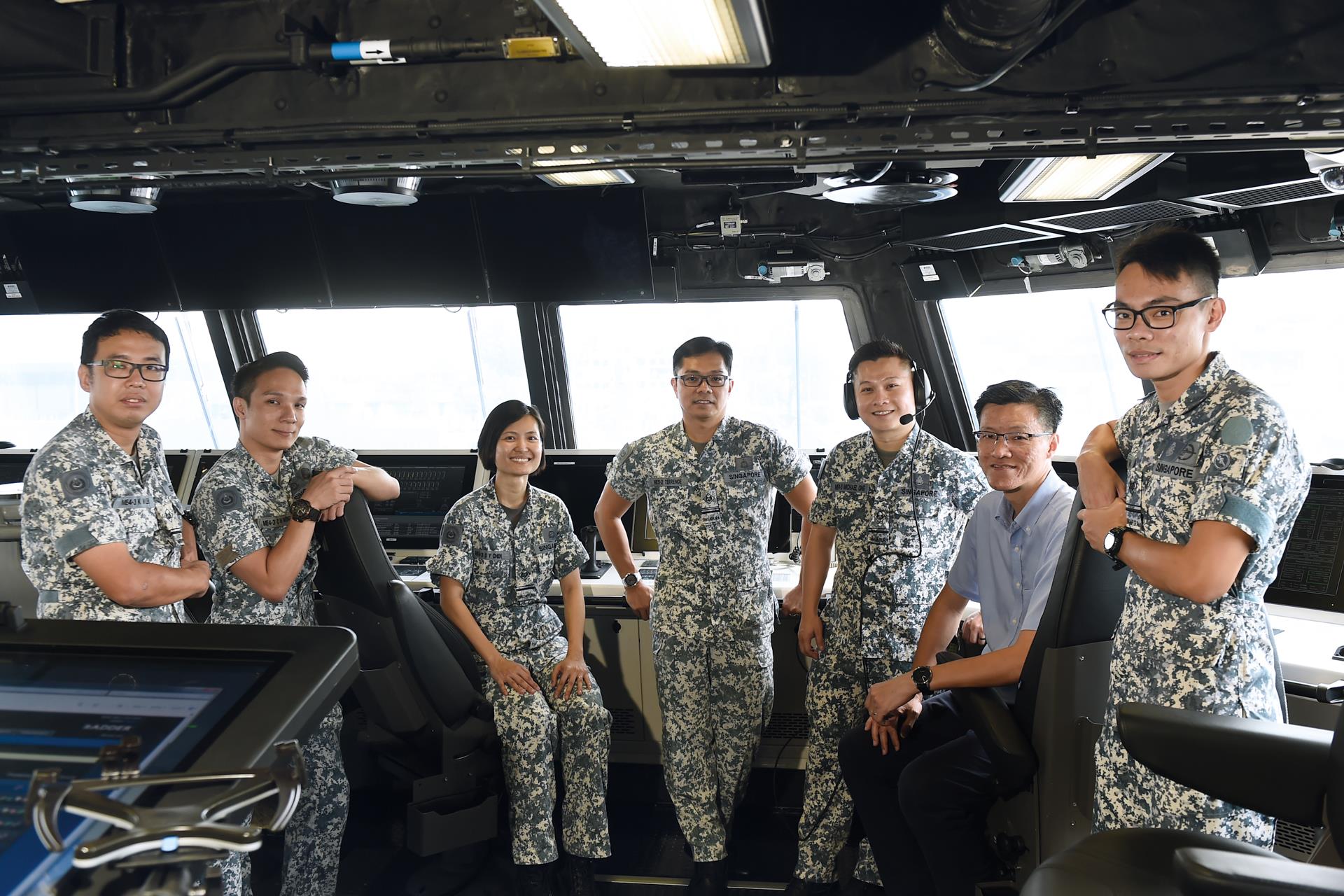
Encouraged to experiment
ME4 Ong likened the team’s approach to building your own computer.
“When we were young, the most cost-effective way to own a computer was to buy parts and assemble them ourselves. But this also meant lots of troubleshooting at home to resolve integration problems,” said the 36-year-old.
The team set up a laboratory in Tuas Naval Base to test the new modems. “The lab allowed us to conduct tests on shore without having to bring the different modems to the ships. We shortened the entire testing effort from a few months to just two weeks,” said ME4 Ong.
Sea trials on board ships were later conducted to ensure the modified modems’ operational effectiveness. One such trial involved sending voice and data to naval bases in Singapore from more than 4,200 km away.
Even when the new modems become obsolete in the future, the RSN can use the same Do-It-Yourself approach to replace them in a cost-effective manner, said ME4 Ong.
Mr Wong, who is now Head of Contract Management Office, credited their success to the team’s willingness to go the extra mile, as well as the RSN’s strong innovation culture.
“When the team wanted to experiment on this project, management supported them with the funding and resources for the lab.”
Delivered to the RSN in September, the new sets will replace the old modems as and when they fail — an approach that will help the Navy save $1.57 million.
For their efforts, the team received the MINDEF Savings and Value Enhancement (SAVE) Award.
Extending ammo lifespan
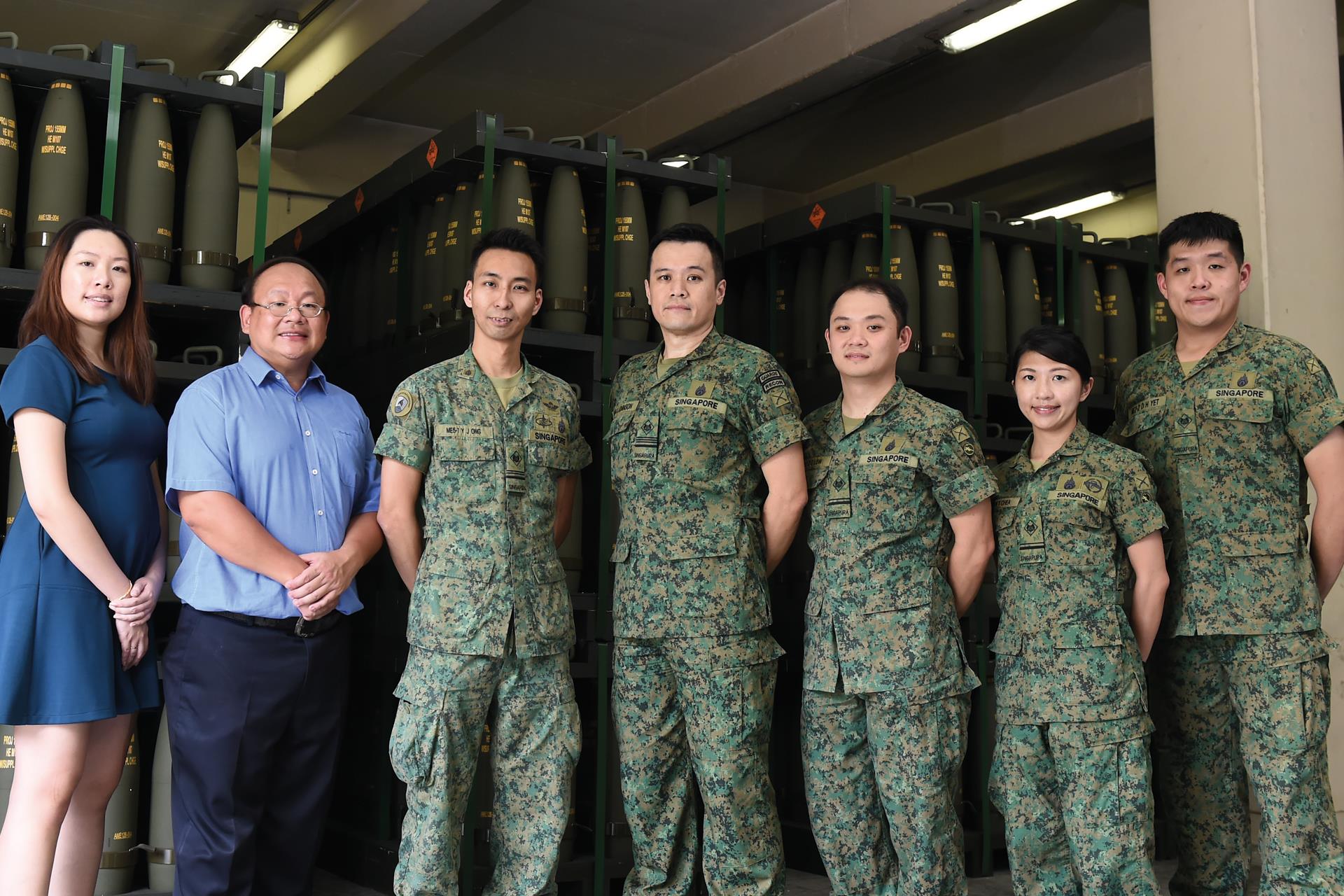
It’s only natural to get rid of something if it has expired. The same goes for the Singapore Army’s ammunition stockpile.
The SAF Ammunition Command (SAFAC) and DSTA, however, have developed a novel way of extending its life span — by procuring the ammunition components separately.
For instance, by replacing the explosive component which expires first in 10 years, the shelf life of a hand grenade can be extended to 30 years.
The same approach is also used currently to extend the lifespan of the 40mm grenade from 10 to 20 years.
“It’s similar to the smartphone, which is limited by the lifespan of its battery. Instead of throwing away the phone, we can continue to use it by replacing the battery,” explained ME5 Andy Ong, Head of Ammunition Management Section, SAFAC.
Projected to save $13.5 million for the SAF, this ammunition stockpile system won the MINDEF Innovation Project Award.
“We constantly search for better ideas to manage our ammunition stockpile. With limited resources, we need to do more with less to stretch the defence dollar,” said ME4 Chea Wei Tien, a SAFAC staff officer.
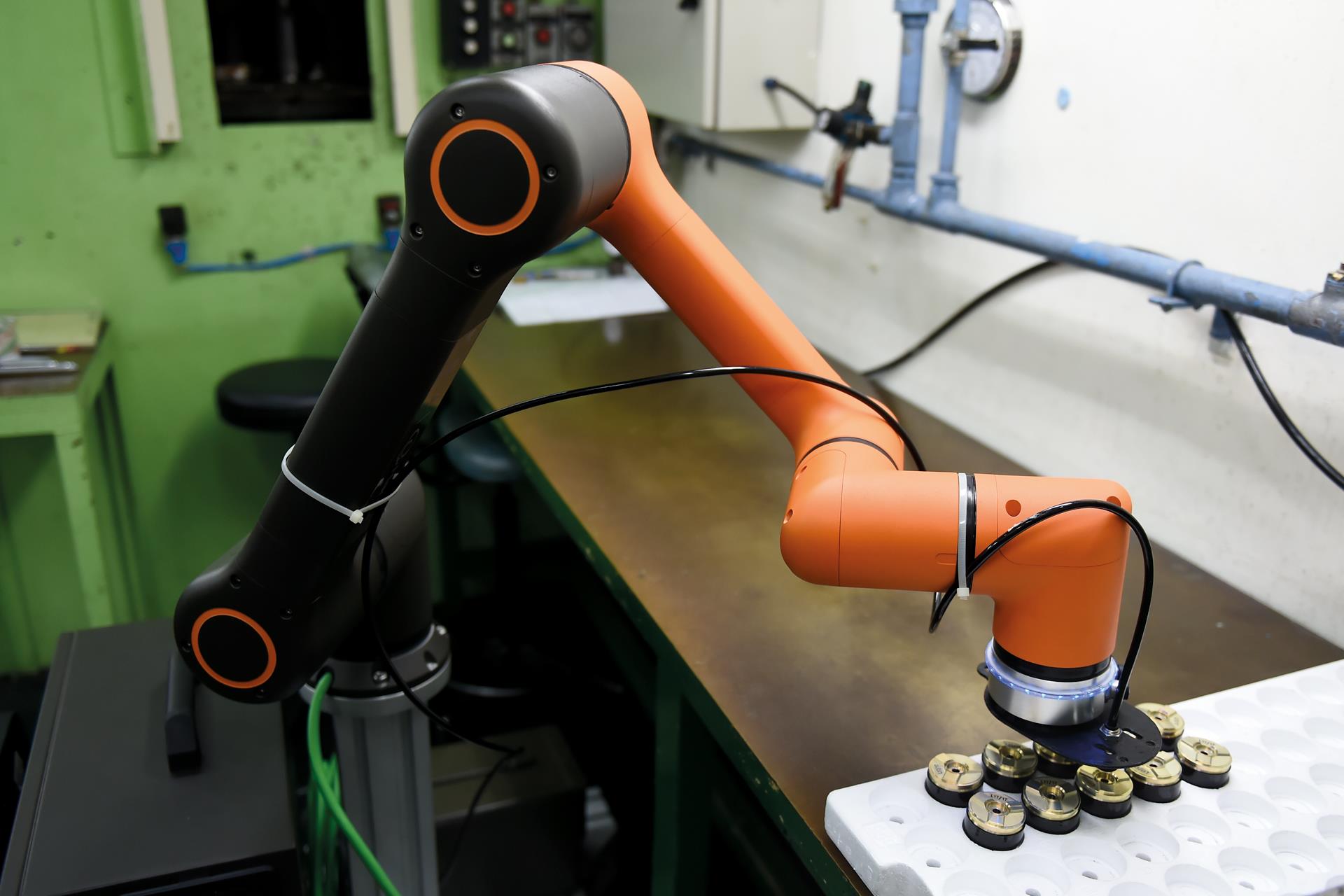
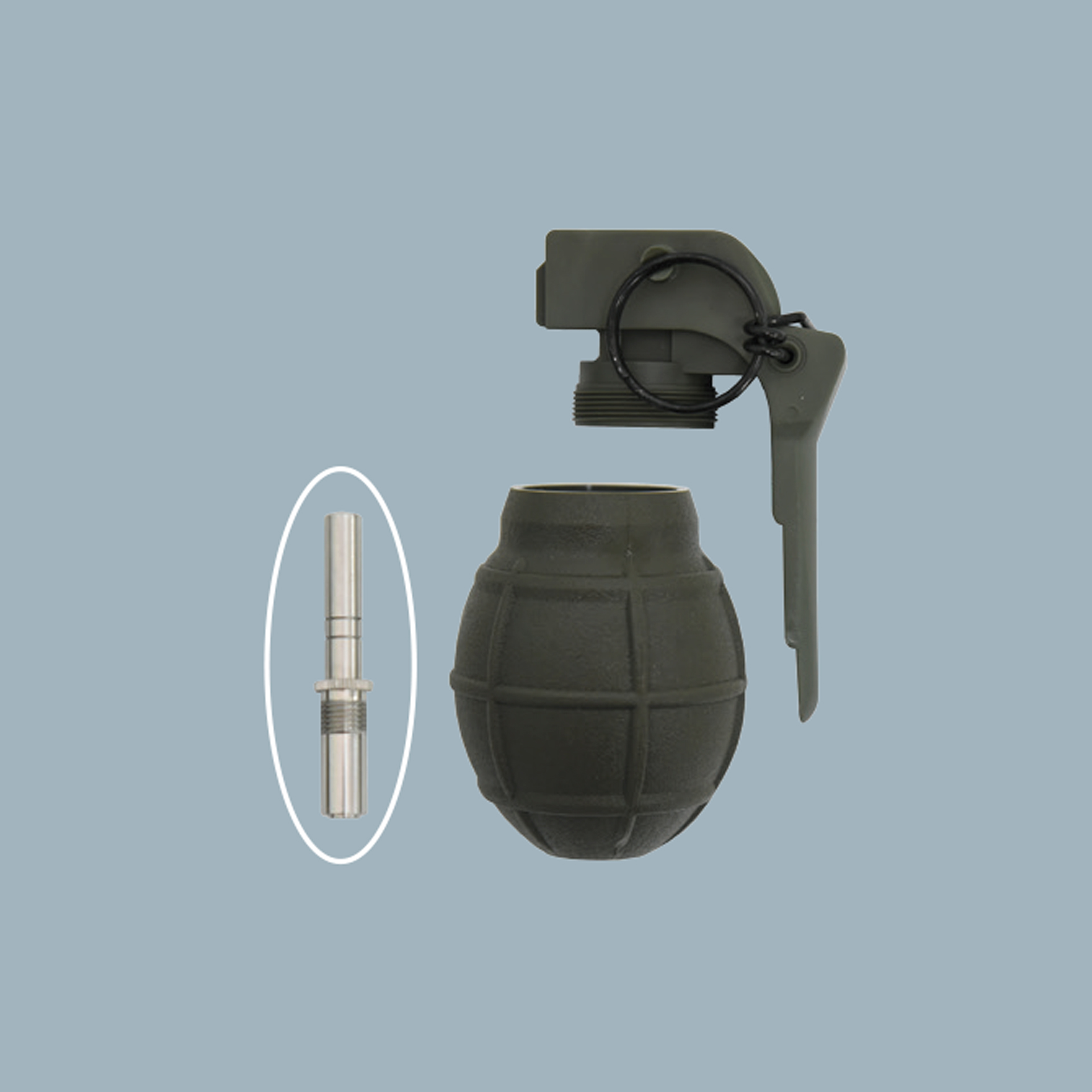
Fast assembly
Currently, the Army keeps a stockpile of fully assembled grenades, ready for training and operational usage. For its reserves, the bodies and explosive components are stored with the Army and a local defence contractor. They are assembled if the need arises.
Since April this year, robotic arms have been progressively tested for deployment in production facilities to automate the assembly of ammunition. Sensors are also used to check the ammunition to ensure reliability.
Going forward, unmanned vehicles will be used to move explosive materials between workstations in a faster and safer manner.
“The robotic arms replace the manual operators during the assembly process, which reduces human errors and enhances safety and reliability. With robotics to optimise manpower and productivity, the production rate can be doubled,” explained Ms Leow Jing Zhi, Project Manager, DSTA.
Ready-to-use magazine
Soldiers who have been on standby duty would have gone through the slow process of loading their Singapore Assault Rifle 21 magazine. On average, it takes about two minutes to fully load the magazine with 30 rounds. And depending on the nature of the mission, each soldier has to load two to four magazines.
Today, soldiers from all standby units are issued with pre-loaded magazines that are ready for immediate use. Sealed in a transparent plastic bag, troops can do a visual inspection on the number of rounds easily.
The people behind this initiative are ME5 Lim Seng Kiat, Head of Conventional Munition Section, SAFAC; and his staff officer ME4 Png Wee Chun. They were awarded the WITS (Work Improvement Team Scheme) Project and Suggestion Award for their efforts.
“The pre-loaded magazine was conceptualised to enhance ops-equipping. We understand from the soldiers that the manual process of loading the rounds was time-consuming, so this was a process we wanted to eliminate,” said ME5 Lim.
Lance Corporal (LCP) Wong Westley, a mortar 2nd-in-charge in 1st Battalion, Singapore Infantry Regiment, was pleasantly surprised to receive the pre-loaded magazines during his first standby duty in May this year.
“I think the pre-loaded magazine really saves a lot of time. As soldiers, we want to focus our time on important tasks like performing just-in-time drills to ensure our proficiency during operations.”
A team effort
A key challenge that ME5 Lim and ME4 Png faced was ensuring that the spring of the magazine remained functional after prolonged compression from the 5.56mm rounds.
Their unit supported the pair by introducing them to mechanical engineering expert ME4 (NS) Eugene Wong, an associate professor with Newcastle University in Singapore.
With his help, they were able to run laboratory tests on the magazine spring. The result was that the spring could last for at least three years.
All pre-loaded magazines are refurbished with new springs, and tests are conducted periodically to ensure that they still work well. The pair is now exploring the use of the pre-loaded magazine concept for other ammunition types used by the SAF.
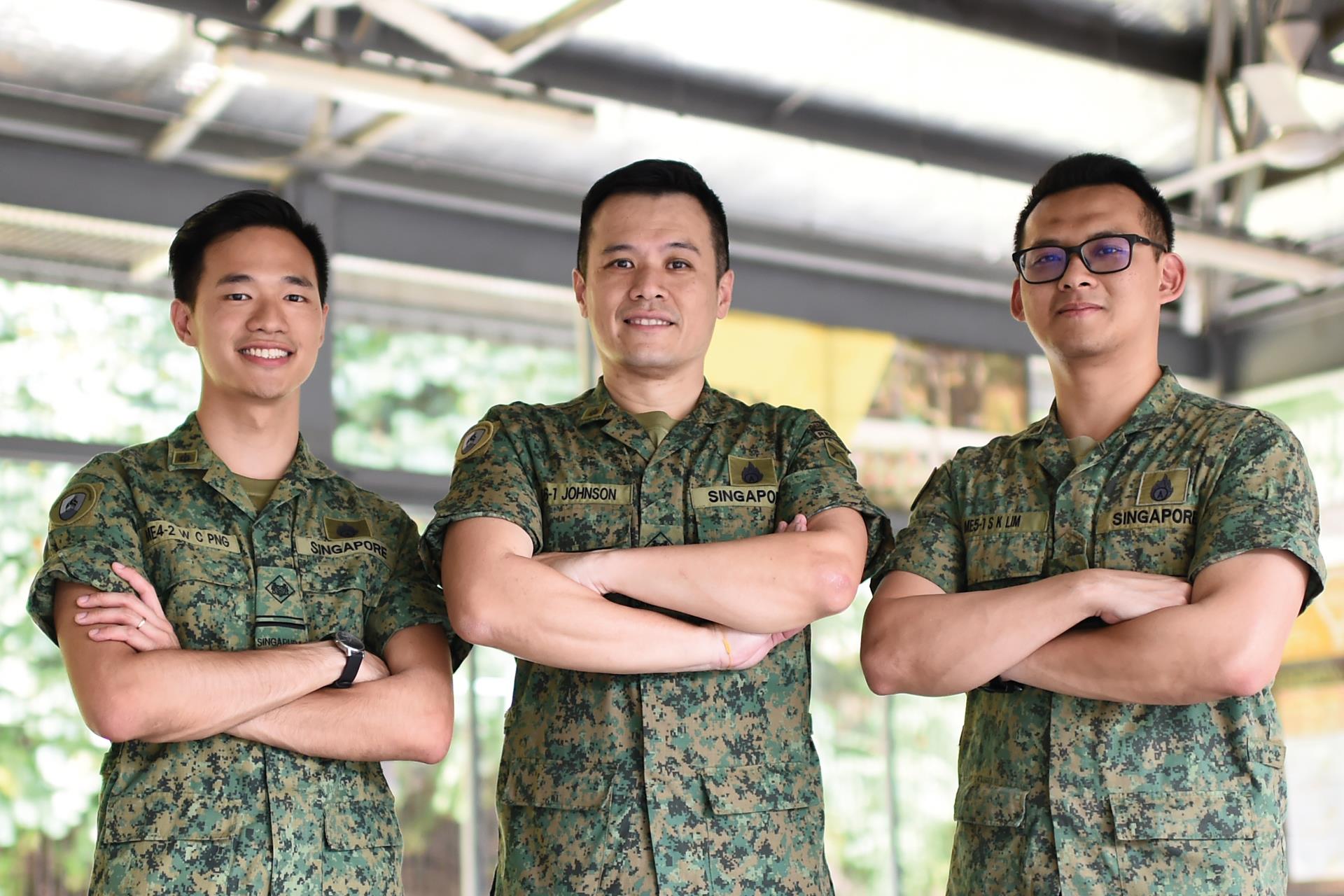
ALSO READ IN TECHNOLOGY
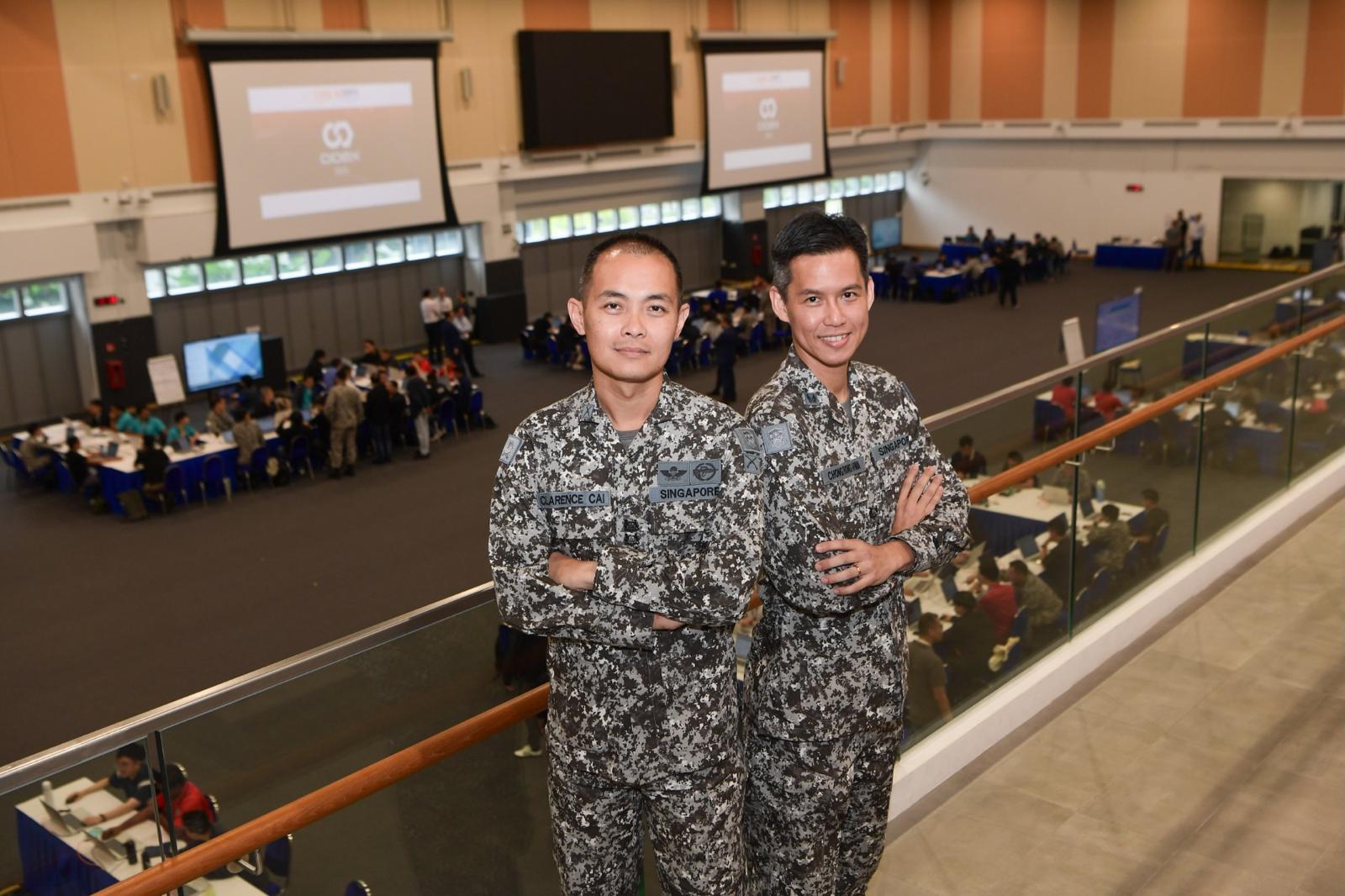
AI joins the fight in national cyber defence exercise
12 Nov 2025
AI and closer collaboration among agencies and industry are taking centre stage in this year’s Critical Infrastructure Defence Exercise (CIDeX).
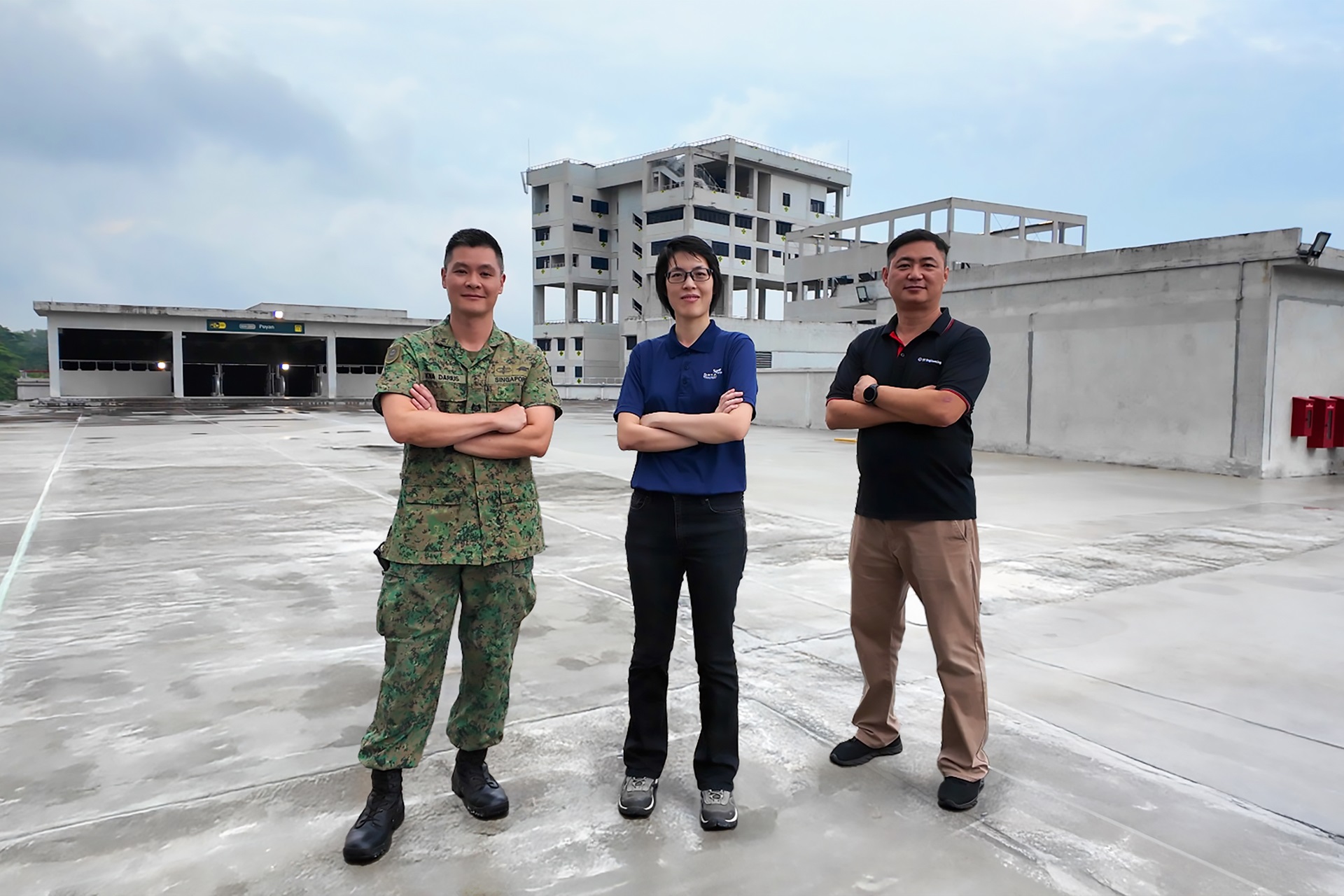
They built this city
01 Oct 2025
Turning vision to reality: the team behind SAFTI City clinches the Defence Technology Prize 2025 Team (Engineering) Award!
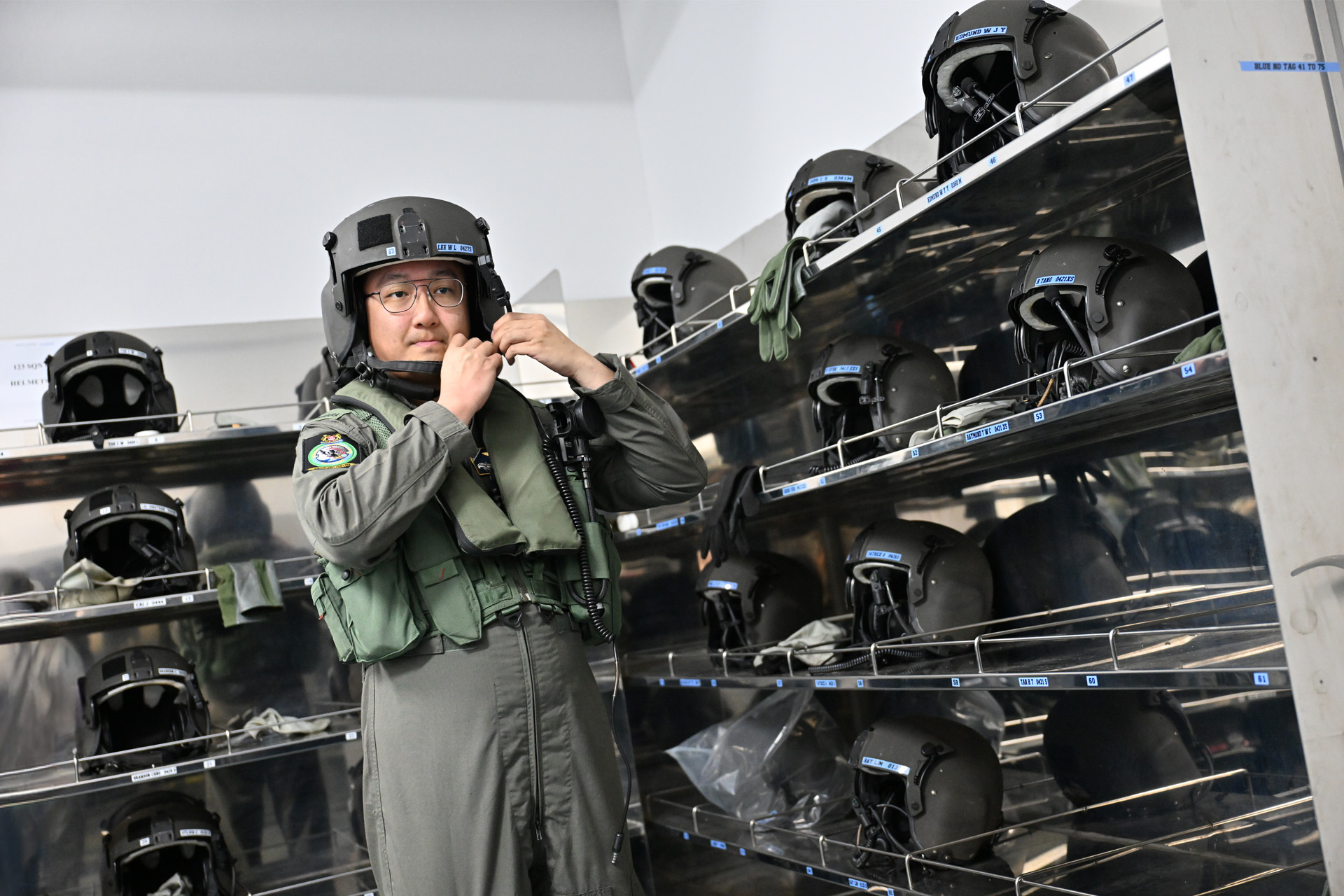
Operating over skies & seas
22 Aug 2025
This gear is designed to help a Sensor Supervisor survive emergencies in the air and at sea.


